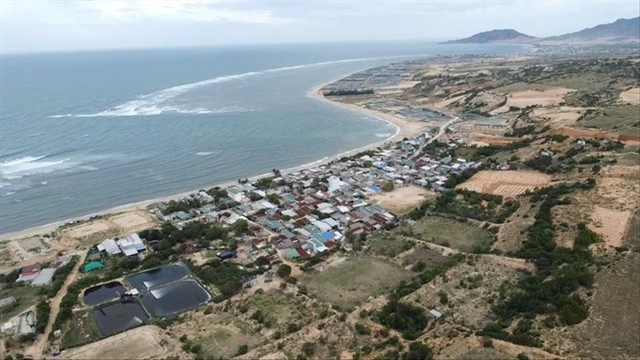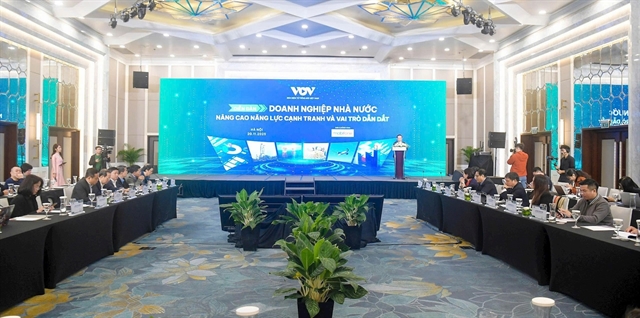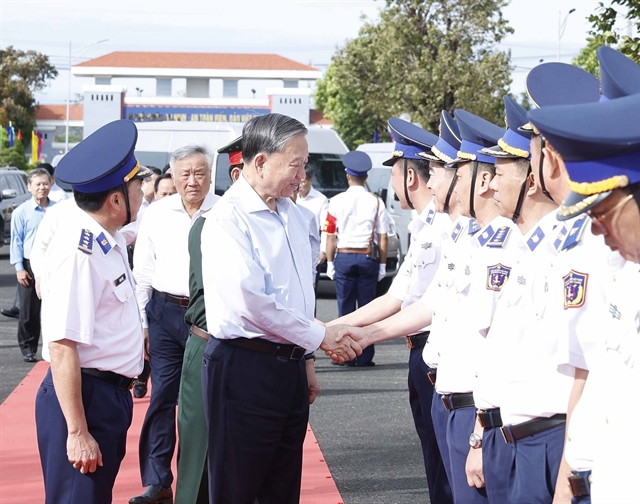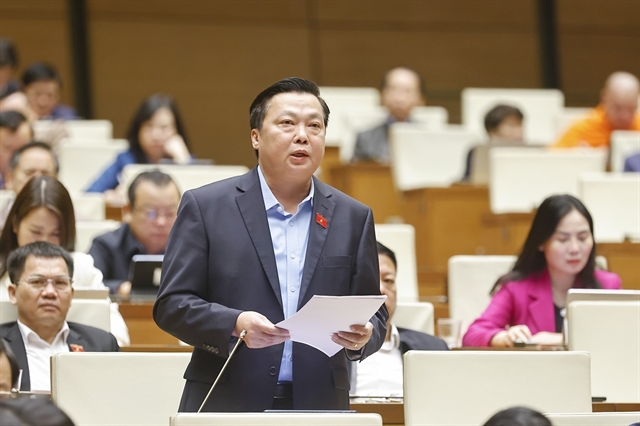 Society
Society

 |
| Japanese Ambassador to Việt Nam Ito Naoki. — VNA/VNS Photo |
Japan is ready to collaborate with Việt Nam on the potential studies and deployment of nuclear reactors, Japanese Ambassador to Việt Nam Ito Naoki tells the Vietnam News Agency in an exclusive interview at the outset of 2025.
What are your impressions of Việt Nam after nearly a year into your tenure? Could you share your thoughts on the advantages and challenges of working in our country?
Since assuming my post in Hà Nội last May, I have had the privilege of engaging with people from a variety of organisations, including the Party, the Government, the National Assembly, and also those of the business sector, educational institutions, and cultural organisations. I've traveled to some 20 cities and provinces across Việt Nam, from Lào Cai and Yên Bái in the North to Cà Mau in the South.
Upon arriving in Việt Nam, I was struck by the unique atmosphere and vibrant energy distinct from all other cities in Asia. This may be attributed to Việt Nam’s consistent development efforts since the country embarked on the Đổi Mới (renewal) process and her position as one of the top-performing economies within ASEAN in recent years. As a result, the Vietnamese people exude confidence in the nation’s future and your whole society is beamed with hope for brighter days ahead.
I believe Việt Nam is one of the ASEAN countries with the potential to achieve a per capita GDP exceeding US$10,000 in the near future.
As Việt Nam is entering a 'new era' under the leadership of Party General Secretary Tô Lâm, I am optimistic that the 'new era' will be a great opportunity to develop and expand the Japan-Việt Nam partnership and that many specific activities will be organised accordingly across different sectors.
The HCM City Urban Railways No.1, a symbol of collaboration between Japan and Việt Nam, began operation in December last year. I am delighted that the local people have warmly welcomed the railway and already experienced the service it has to offer. In this 'new era,' Việt Nam has given top priority to completing strategic infrastructure projects, including transport, digital technology, and energy. Japan welcomes these efforts and will continue to cooperate with Việt Nam in related areas.
Additionally, in high-tech sectors such as semiconductors and emerging areas like digital transformation, green transition, and high-quality human resource training, the Japanese government and businesses will join hands to provide the necessary support for Việt Nam toward its goal of becoming a developed country by 2045 and achieving double-digit growth.
Japan also pays close attention to Việt Nam’s Party General Secretary Tô Lâm's message on combating waste, improving economic efficiency, and streamlining government apparatus. I strongly hope that once the administrative procedures are simplified and clarified, the approval process becomes faster, the operation of businesses working in Việt Nam will be greatly facilitated. This will certainly improve the business climate for Japanese companies and help Việt Nam attract new investments from Japan.
Japanese companies are very interested in investing in Việt Nam. According to the latest survey by JETRO (Japan External Trade Organization), Việt Nam is the most desired country for Japanese businesses to expand their investments within ASEAN. In another recent survey by the Japan Bank for International Cooperation (JBIC), Việt Nam ranked second globally in the manufacturing sector and first in non-manufacturing sectors among countries with high business prospects. I firmly believe that the economic partnership between Japan and Việt Nam will continue to grow.
Japan’s Shinkansen bullet train system is renowned for its advanced technology and also a driver of Japanese economic growth and development. How could Việt Nam learn from Japan’s experience, given that Việt Nam has decided to develop its North-South high-speed train project in the coming time?
In 1964, Japan inaugurated the high-speed rail line Shinkansen, spanning approximately 500km and connecting the two major economic hubs of Tokyo and Osaka. During the rapid economic expansion of the 1960s, Japan launched several major infrastructure projects to fuel its growth, such as the opening of subway lines in Tokyo and Osaka, or the expressway connecting Tokyo and Osaka. Among these, the Shinkansen stood out as a public transportation system that brought about significant economic benefits such as shorter travel time for passengers and more commuters and tourists choosing to travel by rail. That had helped promote regional development and revitalise the Japanese economy as a whole.
The most remarkable feature of the Shinkansen system is its unparalleled frequency of operation, with up to 17 trips per hour, all while maintaining punctuality and very high safety standards. In terms of punctuality, despite the high frequency, the average delay time per train is only 1.6 minutes, including delays caused by natural disasters. In terms of safety, the Shinkansen operates on dedicated tracks without intersections, preventing accidental entry onto the tracks. With automatic train control systems in place, the Shinkansen has maintained the high safety record, with no fatal accidents reported in the six decades since its launch of operation.
Japan’s Shinkansen system has brought about significant benefits by integrating with surrounding residential areas, local train networks, and other transportation systems, enabling comprehensive development. I think it is one of the key reasons for its success. Thanks to this comprehensive development, the Shinkansen demonstrates clear advantages and delivers even greater effectiveness. I believe that infrastructure development projects, such as the building of the Shinkansen, have also propelled related workforce training and development.
In Japan, the introduction of the Shinkansen became a game changer for rapid economic growth. In Việt Nam, the North-South high-speed rail line is also expected to be a transformative catalyst to drive development further.
 |
| A nuclear power plant in Takahama, Fukui, Japan. — KYODO/VNA Photo |
Việt Nam has decided to resume its first nuclear power project in Ninh Thuận Province in the coming time. As a global powerhouse in term of nuclear energy, how will Japan share its experience with Việt Nam and what are the potentials for bilateral cooperation in this field?
First of all, Japan welcomes Việt Nam's announcement to restart the nuclear power plant construction project.
With 60 years of experience in nuclear energy development and in the construction and operation of approximately 60 nuclear power plants, Japan is well-positioned to contribute to Việt Nam’s project.
In terms of specific areas of cooperation, Japan needs to consider viable initiatives based on Việt Nam's needs and project timelines, among other criteria. However, Japan is ready to collaborate with Việt Nam on feasibility studies focusing on the potential deployment of nuclear reactors utilising Japanese technology in the future.
Regarding the human resources training for civil nuclear energy in Việt Nam, we support partnerships between Vietnamese universities under the Ministry of Industry and Trade and related Japanese universities, companies, and organisations. Japan looks forward to continuing to assist Việt Nam in technical cooperation and workforce development, with key contributions from the Japan Atomic Energy Agency (JAEA) and the International Nuclear Energy Development of Japan Co., Ltd (JINED). — VNS




